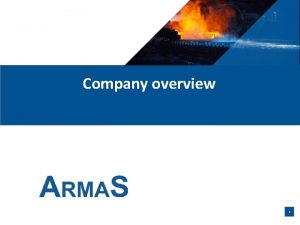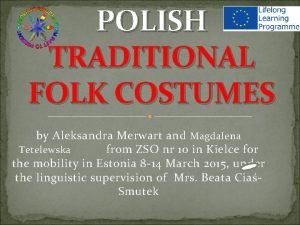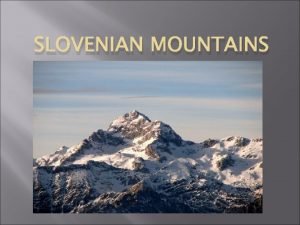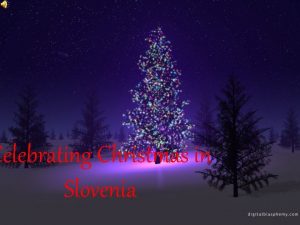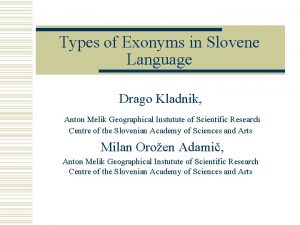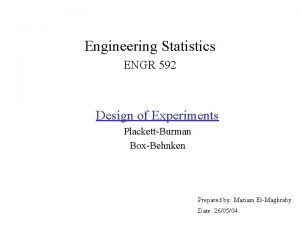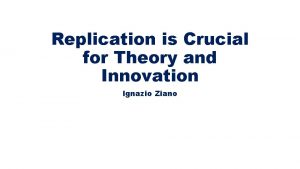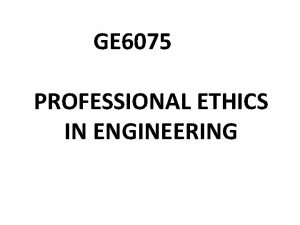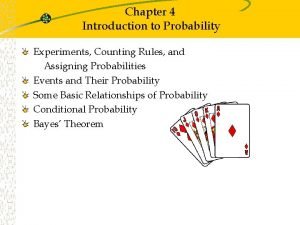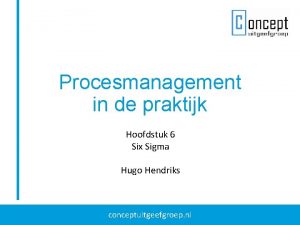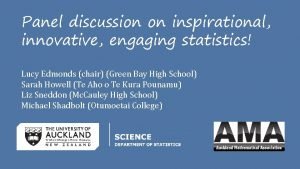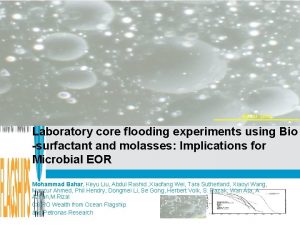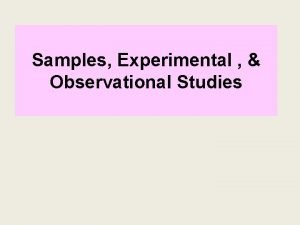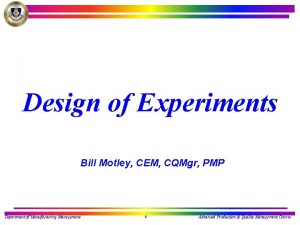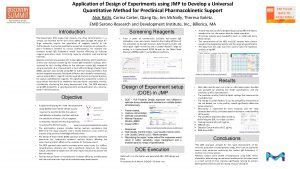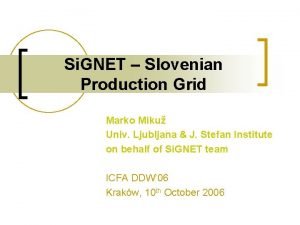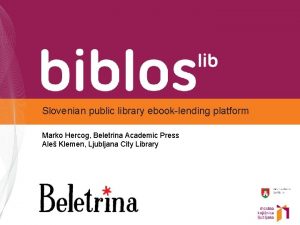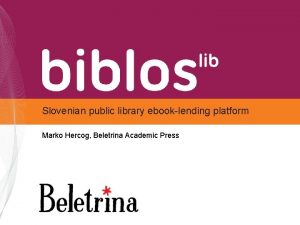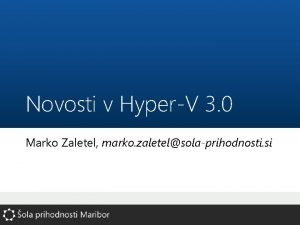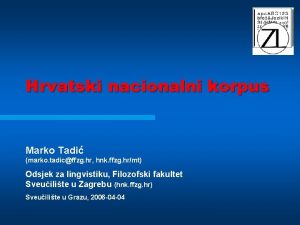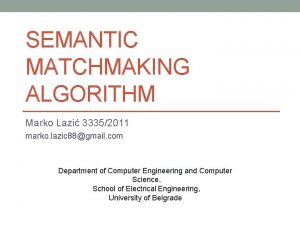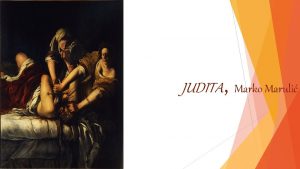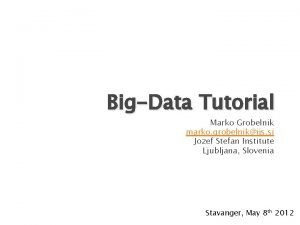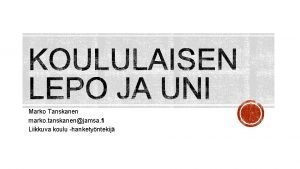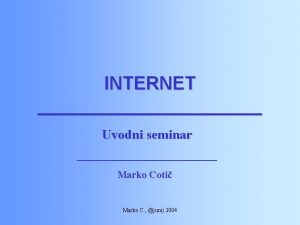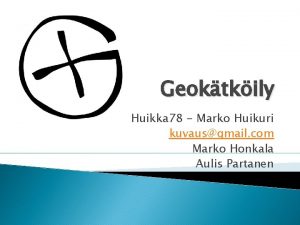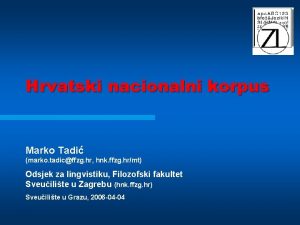Overview of Slovenian Participation in CERN Experiments Marko



















- Slides: 19

Overview of Slovenian Participation in CERN Experiments Marko Mikuž University of Ljubljana & Jožef Stefan Institute

Outline • History of Slovenian HEP in CERN – Experiments – Industrial participation • Si. HEP@CERN today • Prospects CERN, October 9, 2019 M. Mikuž: Si. HEP@CERN 2

Slovenia at CERN • Long struggle leading to Slovenia’s adherence as Associate Member State of CERN in the pre-stage to Membership was successfully concluded on July 4 th 2017 (5 y after Higgs discovery, 241 y after US independence declaration) – First Lo. I in 1992 • Two CERN fact-finding missions • Stalled – Second Lo. I in 2009 • Council task force visit 2010 • Negotiations started • Stalled – Process resumed 2015 and brought to successful completion CERN, October 9, 2019 M. Mikuž: Si. HEP@CERN 3

History of Si@CERN - OMICRON • 1975 -1991 – Prof. G. Kernel invited by Oxford colleagues to join the OMICRON collaboration at CERN SC – Up to 1982 the OMICRON collaboration conducts a series of experiments on pion scattering – Prof. Kernel is joined by several Ph. D students and the Slovenian group becomes a full member of the OMICRON collaboration – For the last experiment, threshold pion production (CERN SC-94), the Slovenian group assumes a leading role with Prof. Kernel the spokesperson of the eksperiment ➢ Thus this year we are celebrating 44 years of Slovenian collaboration with CERN ! CERN, October 9, 2019 M. Mikuž: Si. HEP@CERN 4

History of Si@CERN - CPLEAR • 1988 -2003 – 1985 – Slovenian physicists participate in a proposal to measure time reversal violation at LEAR (PSCC P-88) – 1986 – the proposal is postponed, the collaboration is proposed to merge with the approved CPLEAR experiment (CERN PS-195) – 1988 – Slovenian group joins CPLEAR in the final stage of detector preparation – 1989 – 1996 successful measurements of CP, T and CPT violation in the neutral kaon system, featuring the first direct observation of time reversal noninvariance CERN, October 9, 2019 CP M. Mikuž: Si. HEP@CERN T 5

History of Si@CERN - DELPHI • 1992 -2013 – 1992 – prof. D. Zavrtanik is invited to join the DELPHI collaboration – Up to 2000 we participated in measurements with one of the most successful experiments in HEP history – Numerous precision verifications of the Standard model published in more than 270 SCI papers with 5700 citations – Slovenian physicists participated in data analysis, forward RICH commissioning and extension of the silicon tracker in the forward direction (VFT) for LEP-200 FRICH T VFT CERN, October 9, 2019 M. Mikuž: Si. HEP@CERN 6

History of Si@CERN– ATLAS • 1996– With CPLEAR completed looked for opportunities for the future – Discussions with CMS and ATLAS tracking • Opted for ATLAS – Slovenian group member of ATLAS collaboration since 1996 (148 th institution admitted) – Main construction effort – building the Semi. Conductor Tracker - SCT, part of the particle tracking system - Inner Detector – CORE investment ~1. 7 MCHF – After completing SCT taken on additional responsibilities • Beam Conditions Monitor • Beam Loss Monitor • Radiation Monitor CERN, October 9, 2019 M. Mikuž: Si. HEP@CERN 7

HEP in Slovenia Today • The Slovenian HEP community is composed of researchers from Jožef Stefan Institute and three Universities (Ljubljana, Maribor, Nova Gorica) – Experimental and Theoretical Particle Physics effort led by JSI – Astro-Particle by University of Nova Gorica (spawned off PP) • Experiment (PP&AP): ~40 researchers, including ~10 faculty and ~10 Ph. D students • Theory: ~10 researchers, 4 faculty, 4 students Universities Jožef Stefan Inst. CERN, October 9, 2019 • Faculty staff holds parttime positions at JSI M. Mikuž: Si. HEP@CERN 8

Si. HEP Today: Experiment • Led by Experimental Particle Physics Department of JSI – Head count: ~30 researchers • Currently active in two major HEP collaborations – ATLAS at the LHC in CERN – Belle 2 at Super-KEKB in KEK (recognized exp. @CERN) • Detector development – Also as part of two R&D collaborations at CERN • RD-42: diamond detectors, RD-50: radiation-hard silicon detectors – Technical associates of LHC-B • Computing RD 42 CERN, October 9, 2019 M. Mikuž: Si. HEP@CERN 9

Si. HEP@CERN: Computing • Joined WLCG in 2003 • Establishment of Slovenian National Grid Initiative SLING in 2010 • • – – Participation in EGEE I, III, EGI projects Member of Nordugrid since 2010 – – To promote grid/distributed computing in Slovenia General purpose cluster/HPC at ARNES using grid middleware to serve Slovenian science Si. GNET TIER-2 Centre – – Site dedicated to ATLAS and Belle 2 6700 cores, storage: 4. 2 PB as a part of Nordic Tier-1 d. Cache (~40% ATLAS space), 1. 2 PB for Belle 2 20 Gb/s connectivity to Geant LHCONE Contributing 2 -3% to ATLAS Euro. HPC Vega – – 30 M EUR project to establish a national competitive HPC centre (RIVR) in Slovenia Sourced from EC cohesion funds 2018 -2020, located in Maribor All SLING members participate in design, procurement and operation A significant part will be used by HEP experiments, CERN, October 9, 2019 M. Mikuž: Si. HEP@CERN 10

Si. HEP@CERN: Scientific Return • During the 44 years of scientific collaboration with CERN – ~1400 scientific papers published • >900 by ATLAS – ~58000 citations in SCI database – 22 BSc, 16 MSc and 24 Ph. D theses – Participation in CERN-led EU FP • EGEE, MC-PAD, AIDA-2020 – Several fellowships and associateships granted • CERN initiated Slovenian HEP and although no longer CERNexclusive, Slovenian HEP has benefitted enormously from this collaboration CERN, October 9, 2019 M. Mikuž: Si. HEP@CERN 11

Nobel Prize “for theoretical discovery of a mechanism that contributes to our understanding of the origin of mass of subatomic particles, and which recently was confirmed through the discovery of the predicted fundamental particle, by the ATLAS and CMS experiments at CERN’s Large Hadron Collider”. François Englert in Peter W. Higgs first met at the seminar in CERN on July 4 th 2012, when ATLAS and CMS revealed their results on the evidence of a new boson with properties consistent with the Higgs boson of the Standard Model. CERN, October 9, 2019 M. Mikuž: Si. HEP@CERN 12

Si. HEP@CERN: Industrial Participation • Limited to experiments where Slovenia participated • ATLAS experience – About 1. 2 MCHF out of 1. 7 MCHF CORE investment returned to Slovenia – Almost exclusively to Elgoline Ltd. • Low-mass tapes • Large scale heater pads • Conventional patch panels • Adequate industrial return thus possible – Requires major effort by researchers to identify and help developing the products • Longer term return as CERN member state ? – Continued contribution to experiments (ATLAS) – Contribution to machine and its upgrades (follow-up talk by ILO) CERN, October 9, 2019 M. Mikuž: Si. HEP@CERN 13

SCT: Large Dimension FPC • • SCT modules need supply for sensors readout and optical transmission – 16 lines up to 1 A current and 500 V voltage rating – No space available for round cables – Solution – supply by Flexible Printed Circuit tapes Additional requirements – Radiation dose up to 100 k. Gy – radiation hard materials: Kapton® – Minimal material in tracker – aluminium as conductor (4 x better than Cu) – Length up to 4 metres Show-stopper(s) – Few manufacturers of FPC on aluminium-Kapton® laminates – Technology for sizes over 1. 8 m not available Solution – – Custom technology development for FPC production on aluminium-Kapton® laminates Developed by JSI and ELGO-LINE, Cerknica in collaboration with several local partners NTC JSI Balder Ltd. , Ljubljana FDS Research Ltd. , Trzin Apel Ltd. , Ljubljana CERN, October 9, 2019 EL tim GOely line de rec liv er y a ed A nd TL qu AS ali Su ty pp of lie pr r A od w u c ar d t fo r • Optical control FDS and Apel Cutting ½ cables of SCTExposure barrel End-cap cables Apel BALDER M. Mikuž: Si. HEP@CERN 14

SCT: Large Scale Heater Pads • SCT operates at -7°C, TRT at 20°C – Thermal barrier between the two detectors – Thermal neutrality required – Enclosure cooled to -7°C on SCT, heated to 20°C on TRT side Ø Need large scale heater pads with ~ 200 W/m 2 power rating Ø Large scale FPC technology can be easily ported to heater production Thermal camera test Heater pads in TRT barrel CERN, October 9, 2019 M. Mikuž: Si. HEP@CERN 15

Elgoline: Financial Return original ATLAS SCT order CERN, October 9, 2019 M. Mikuž: Si. HEP@CERN 16

Si. HEP@CERN: Prospects • Long term experimental HEP commitments at CERN • ATLAS and its upgrades • Expect at least 15 y of successful physics at (HL)LHC • R&D for HL-LHC finished • TDR’s approved, upgrade Mo. U’s about to be signed CERN, October 9, 2019 M. Mikuž: Si. HEP@CERN 17

Si. HEP contribution to ATLAS ITk • ITk Strips about 2 x larger than ATLAS SCT – 165 m 2 of instrumented silicon wafers – Focus on end-cap • Bus tapes – flexible circuits – Cu/Kapton©, double-sided, dimensions 65 x 35 cm 2 – Used to route the power (HV and LV), data, ground, clock and some control to silicon strip modules on a end cap petal – Specification drawn by the ATLAS ITk strip upgrade project – The circuit has to exhibit a 1/1000 dimensional stability, and be radiation hard up to 660 k. Gy – The data transmission line has to be 100 +- 10 Ohm and the signal attenuation less than 14 d. B • Developed by Jožef Stefan Institute in collaboration with Elgoline Ltd. – Expected procurement in the following 3 years CERN, October 9, 2019 M. Mikuž: Si. HEP@CERN 18

Conclusion • Slovenian scientists perfectly integrated into the CERN community • Science can ease in the industrial participation through active collaboration of industry with scientists • Past achievements, present engagements and future directions guarantee stable and sustainable development in the decade to come CERN, October 9, 2019 M. Mikuž: Si. HEP@CERN 19
 Partial participation
Partial participation Slovenian steel group
Slovenian steel group Costumes with bright colours are for festivals in poland
Costumes with bright colours are for festivals in poland Slovenian mountains
Slovenian mountains Father frost slovenia
Father frost slovenia Slovenian orthography
Slovenian orthography Stereotypes about slovenians
Stereotypes about slovenians Plackett burman method
Plackett burman method Why is “replication key” psychology experiments?
Why is “replication key” psychology experiments? Balanced outlook on law
Balanced outlook on law Counting rule for multiple-step experiments
Counting rule for multiple-step experiments Virtual lab computer organization
Virtual lab computer organization Griffith
Griffith Design of experiments voorbeeld
Design of experiments voorbeeld Liz sneddon bivariate
Liz sneddon bivariate Miller and urey's experiments attempted to demonstrate
Miller and urey's experiments attempted to demonstrate Core flooding experiments
Core flooding experiments Biased and unbiased samples
Biased and unbiased samples Design of experiments quality management pmp
Design of experiments quality management pmp Jmp design of experiments
Jmp design of experiments

